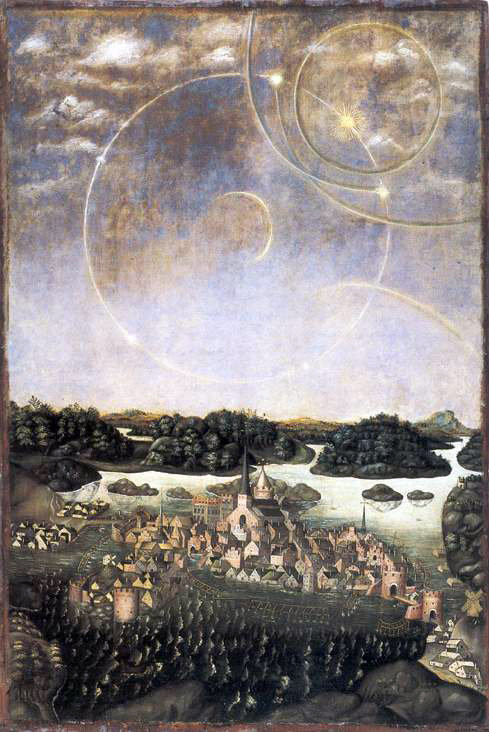This painting by the painter Jacob Heinrich Elbfas (c.1600–1664) is probably the oldest representation of Stockholm and the oldest Swedish panorama. Preserved in Storkyrkan’s cathedral, it is the copy of 1636 an earlier painting from 1535 gone lost, which depicts an atmospheric optical phenomenon observed in the sky of Stockholm on the morning of April 20, 1535: a particularly spectacular parhelion during which the sky was crossed by white circles and arcs, and bright spots similar to other suns (up to eight) around the real one. The parhelion, also called “solar dog”, is due to the refraction of sunlight by the ice crystals suspended in the atmosphere and this painting is also the oldest known representation of this phonomenon. The title of the painting, Vädersoltavlan, means in Swedish “picture of the weather sun”, that seems to suggest the atmospheric origin of the phenomenon. However, the religious interpretation attributed to the so-called “prodigies” a supernatural sense of warning of divine anger and therefore a prelude to a misfortune. In the particular historical moment of conflict with Denmark and the Kalmar Union, rumors arosed according to which the phenomenon was to be seen as an omen of the imminent revenge of God on King Gustav I of Sweden (1496 – 1560) for introducing Protestantism into Sweden and for his tyranny towards Denmark’s allies.




